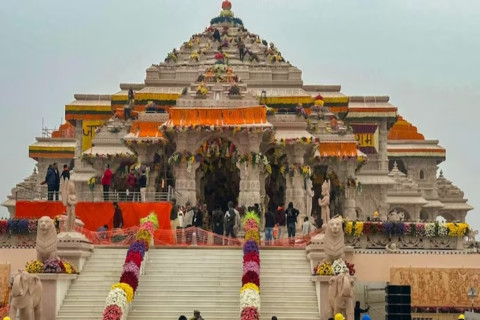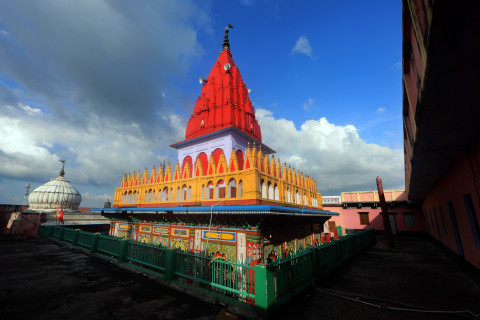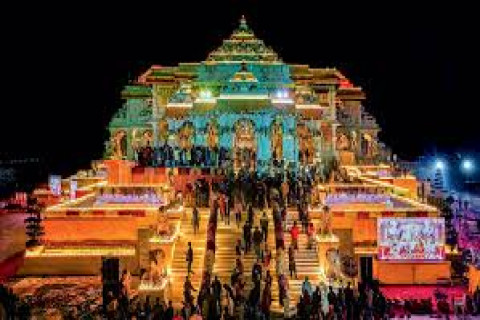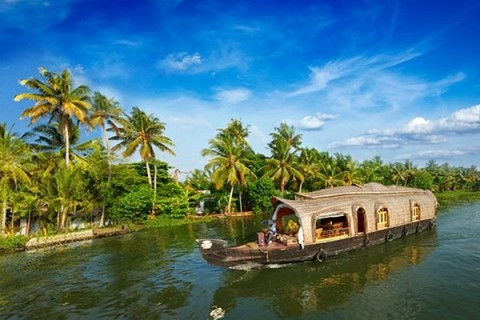Top 7 Indian Festivals Tourists Should Not Miss — A Cultural Calendar of Unforgettable Experiences
02 Jul 2025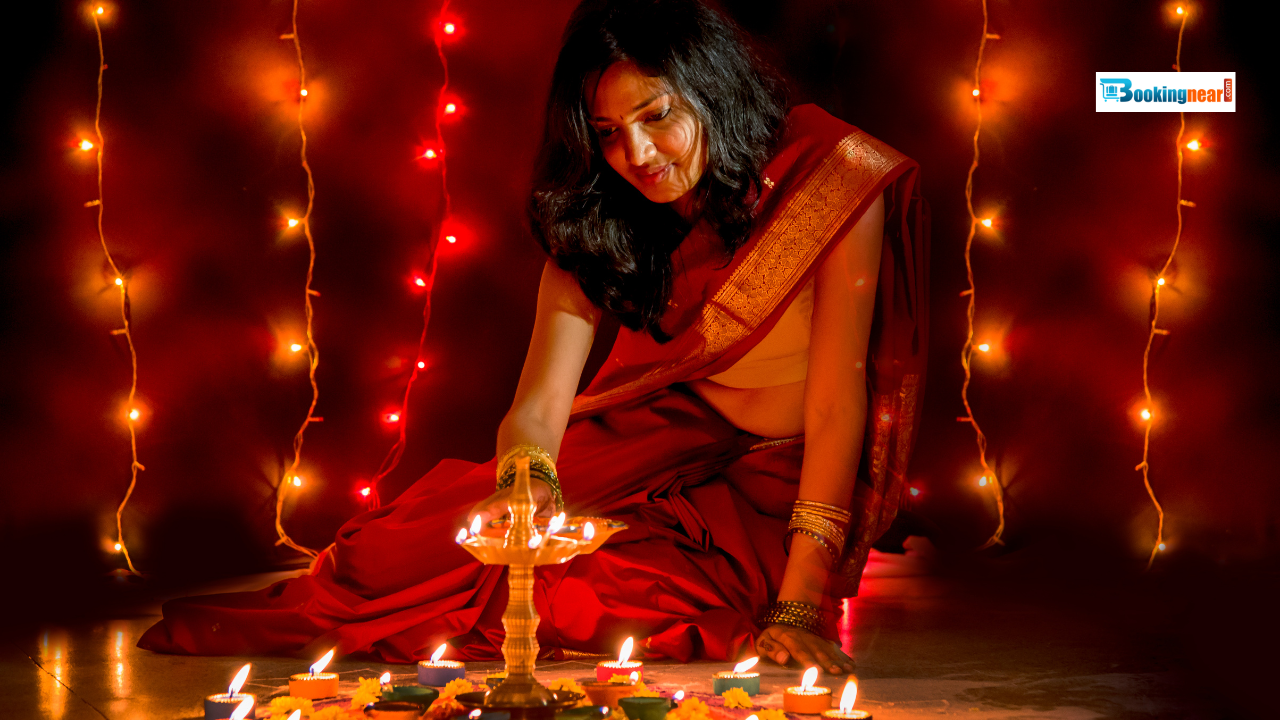
Festivals That Tell the Story of India
There are places you visit and places that visit you back. India, with all her spirit, sound, and soul, will do the latter. Her festivals? Oh, they’re not mere events. They are seasons of their own—gods come to earth, mortals dance to the stars, and color becomes language.
Allow me to be your chronicler. Here are the top 7 Indian festivals tourists should not miss if you wish to court the extraordinary.
1. Diwali: The Festival of Lights (October/November)
Imagine wandering down a cobbled lane as tiny clay lamps flicker along every doorstep. The air carries the scent of rosewater and fried sweets. Firecrackers bloom like fiery lotuses in the sky. That, my friend, is Diwali.
From the smallest hamlet to the largest metropolis, this festival unites India in a shared reverence for light. It honors Rama’s return from exile, but really, it’s about family, faith, and fresh beginnings.
Where to see it best: Varanasi, where the Ganges reflects a thousand flames; Jaipur, lit like a jeweled necklace; Amritsar, serene and glowing at the Golden Temple.
2. Holi: The Festival of Colors (March)
It begins quietly: a handful of colored powder, a splash of water. Then—madness. Laughter, song, dance, and vivid hues smeared on every face. During Holi, India lets down her hair.
Rooted in tales of Krishna and Radha, Holi is a full-throated welcome to spring. In its joy, there's mischief, yes, but also an invitation: be part of the tribe, if only for a day.
Wear white, bring no agenda. Leave, reborn.
Where to go: Mathura for mythology, Vrindavan for devotion, Delhi for delightful chaos.
3. Dussehra: The Bonfire of Evil (September/October)
Dusk falls, and effigies of the demon Ravana tower over the field like papier-mâché titans. Then—flames. The crowd roars. This is Dussehra, the end of evil incarnate.
It retells Rama's victory, yes, but it’s also a pageant, a performance. Ramleelas unfold nightly, villages gather, and truth triumphs with theatrical flair.
Where to see it burn: Delhi’s Ramlila Maidan for drama, Mysore for regality, Kullu for pure soul.
4. Durga Puja: The Goddess Comes Home (September/October)
If art and spirituality had a lovechild, her name would be Durga Puja. In Kolkata, the goddess Durga arrives like royalty. Artists craft pandals (temporary temples) so grand, they rival Versailles.
The drums, the dance, the devotion—it’s celebration with soul. And at its heart, a fierce mother goddess who slays demons and embraces her people.
Best experienced in Kolkata, where tradition meets imagination in dazzling procession.
5. Onam: Kerala’s Ten Days of Grace (August/September)
Down south, where the backwaters whisper through coconut groves, Onam blooms. This harvest festival isn’t loud, but it’s profound. Kerala lays out floral carpets, hosts boat races, and serves feasts that could shame a royal wedding.
It’s the return of King Mahabali, a just and beloved ruler. And for ten days, life slows, smiles widen, and joy simmers gently.
Where to go: Kochi or Alleppey. Watch the snake boats slice through water, then dine on 26-dish meals on banana leaves.
6. Ganesh Chaturthi: The God with the Elephant Smile (August/September)
Mumbai turns into a tide of faith during Ganesh Chaturthi. Lord Ganesha, the remover of obstacles, is welcomed with drums, dancing, and sweet modaks.
Every street corner has a statue. Some are modest, others towering. All are adored. After days of reverence, comes the final act: visarjan. Idols are carried to the sea in ecstatic farewell.
Best seen in Mumbai, where the spirit is infectious, and the energy is electric.
7. Pushkar Camel Fair: The Desert's Grand Masquerade (November)
In the sand-streaked town of Pushkar, Rajasthan hosts a gathering like no other. The Pushkar Camel Fair is part marketplace, part carnival, part spiritual retreat.
Yes, there are camels. Thousands. But there are also:
-
Turban-tying contests
-
Fire dancers leaping through dusk
-
Traders, mystics, musicians, and monks
By the sacred Pushkar Lake, life unfolds with all its oddities and elegance.
Don’t just visit—immerse.
Notes from the Road: Festival Travel Tips
-
Plan ahead: Trains and hotels vanish months before peak festivals.
-
Respect local customs: Take your shoes off, cover your shoulders, ask before photos.
-
Hydrate and rest: Festivals can be overwhelming in the best way.
-
Participate: Let go. Dance. Say yes.
A Final Note from the Old Traveler's Notebook
India doesn’t have festivals. It becomes them.
These are not spectacles to watch from afar. They are whirlwinds to step into. You will come for the fireworks, the colors, the chants. But you’ll stay for something deeper: the sacred joy of being part of something grander than yourself.
So, pack light but carry wonder. India’s waiting to celebrate with you.
Facebook Twitter Linkedin PinterestFAQs
Blogs Categories
Recent Blogs
- Dubai Desert Flying Dress Videography Tour 11 Jan 2026
- Burj Khalifa Videography Tour 11 Jan 2026
- Entrance Ticket Natural History Museum Abu Dhabi 10 Jan 2026
- Louvre Abu Dhabi Museum Tickets 10 Jan 2026
- Emirates Park Zoo and Resort Abu Dhabi Entrance Ticket 10 Jan 2026
- Ain Dubai Observation Wheel Ticket 03 Jan 2026
- Dubai Mall House of Hype Entrance Tickets 02 Jan 2026
- Tickets for Zayed National Museum 25 Dec 2025
- Entrance Ticket to Natural History Museum Abu Dhabi Tickets 25 Dec 2025
- Entrance Ticket to the Louvre Museum in Abu Dhabi 25 Dec 2025
